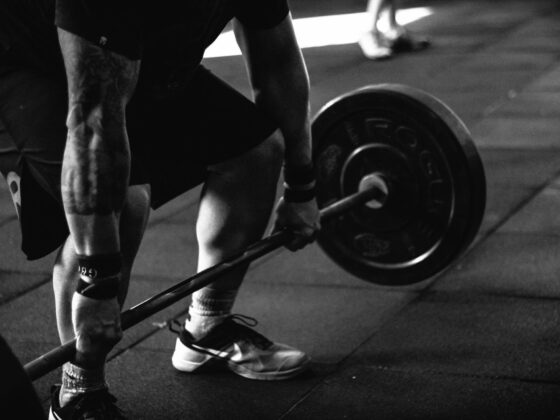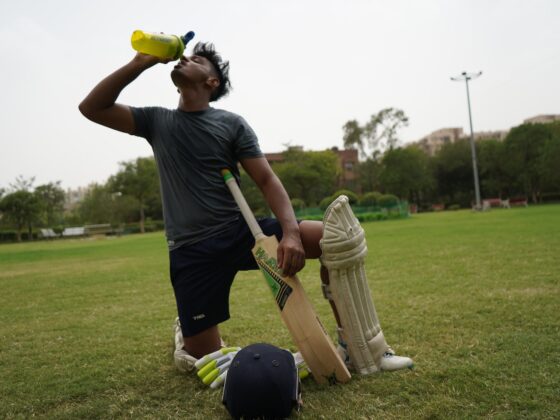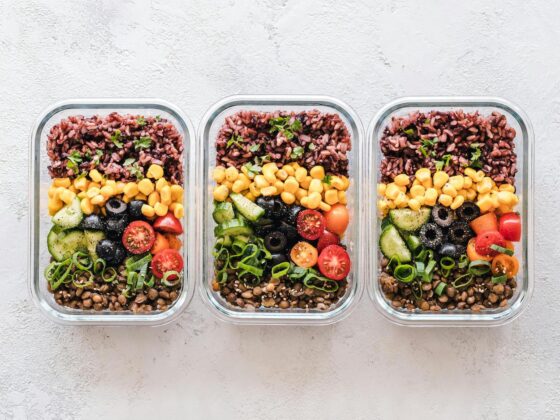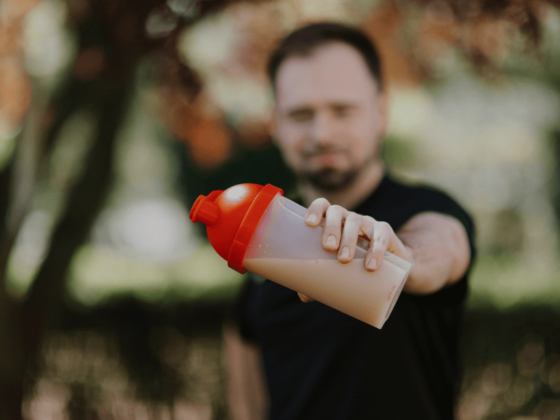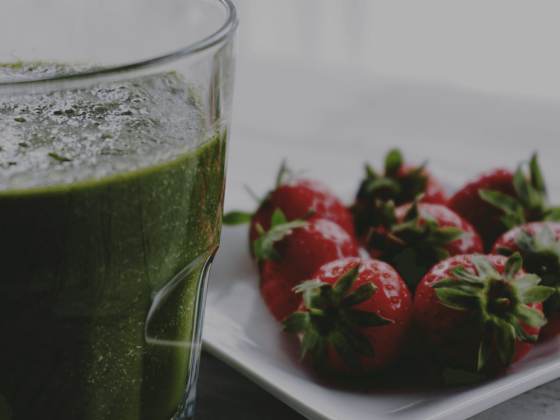Did you know that post workout rest is as critical as the exercise itself? Prioritizing proper post-workout strategies to reduce muscle soreness, enhance healing, and ensure better performance during your next session. Fitness Expert Omar Sitto (https://consistencykills.buzzsprout.com/ ) “To maximize post-workout recovery, focus on the 3 R’s- Rehydrate, Refuel & Rebuild.
- Rehydrate with water and electrolytes (sodium chloride, potassium, magnesium and calcium) to replenish fluids lost during your workout.
- Refuel with a balanced and nutritious meal (focus on lean protein, healthy carbs and fats) within an hour to aid muscle repair and glycogen replenishment.
- Rebuild with static stretching and/or foam rolling to the area you just trained to promote blood flow, ease muscle tension and reduce soreness.”
Are you ready to take things to the next level? Here’s a comprehensive guide to speeding up your recovery process, supported by expert tips from FrogFuel, Healthline, and the Cleveland Clinic.
1. Prioritize Sleep Quality
Recovery starts with sleep. Aim for 8-10 hours per night to help your body repair and rebuild muscles, reduce fatigue, and enhance performance. A consistent sleep-wake schedule is key for achieving quality rest (FrogFuel, n.d.).
2. Hydrate Properly
Proper hydration is essential for muscle function and nutrient transport. Drink plenty of water post-workout to replenish fluids lost through sweat. For extended or intense workouts, consider electrolyte drinks to restore essential minerals like sodium, potassium, and magnesium (FrogFuel, n.d.; Cleveland Clinic, 2022).
3. Incorporate Cryotherapy
Cold therapy or cryotherapy helps reduce muscle pain and inflammation by exposing the body to cold temperatures. Professional athletes often use cryotherapy after competitions to speed up recovery (FrogFuel, n.d.).
4. Utilize Heat Therapy
On the flip side, heat therapy promotes blood flow and nutrient delivery to muscles, which can accelerate healing. Applying heat after a workout helps relax muscles and reduce tightness (FrogFuel, n.d.).
5. Take Epsom Salt Baths
Soaking in Epsom salts is a time-tested method for reducing muscle soreness and inflammation. The magnesium absorbed through the skin can help relax muscles and alleviate discomfort (FrogFuel, n.d.).
6. Stretch After Your Workout
Post-workout stretching is essential for enhancing flexibility, reducing muscle tension, and preventing injuries. Focus on the muscles you worked most during your exercise to prevent tightness and promote faster recovery (FrogFuel, n.d.; Healthline, n.d.).
7. Foam Rolling for Relief
Foam rolling can significantly reduce muscle tightness and improve circulation. This technique helps break up knots and enhances blood flow, which speeds up recovery (FrogFuel, n.d.).
8. Engage in Active Recovery
Low-intensity activities like walking, yoga, or swimming are excellent for active recovery. These movements keep muscles engaged without overloading them, promoting faster recovery (FrogFuel, n.d.; Healthline, n.d.).
9. Consume Protein for Muscle Repair
Protein is crucial for repairing muscle fibers damaged during a workout. Collagen protein is particularly beneficial for supporting the recovery of muscles, tendons, and ligaments. It’s also often easier to digest than whey protein (FrogFuel, n.d.).
10. Eat Right After Exercise
Consuming a balanced meal with protein, carbohydrates, fiber, and healthy fats within 30-60 minutes post-workout helps replenish glycogen stores and support muscle recovery. This is especially critical for maintaining energy levels and enhancing muscle repair (FrogFuel, n.d.; Healthline, n.d.).
11. Consider Healing Supplements
Supplements such as collagen, BCAAs (branched-chain amino acids), omega-3s, and probiotics can accelerate recovery, reduce inflammation, and improve overall health (FrogFuel, n.d.).
12. Wear Compression Garments
Compression garments have been shown to reduce muscle swelling and boost circulation, which speeds up recovery. Many athletes use compression gear post-exercise to facilitate faster muscle healing (FrogFuel, n.d.).
13. Manage Stress
Chronic stress increases cortisol levels, which can impede muscle healing. Managing stress through techniques like mindfulness or meditation can significantly improve recovery times (FrogFuel, n.d.).
14. Hydrotherapy for Soreness
Alternating between hot and cold water during a shower can stimulate blood flow, alleviate soreness, and enhance recovery. This method, known as contrast hydrotherapy, is commonly used by athletes to recover faster (FrogFuel, n.d.).
15. Sports Massage for Faster Recovery
A professional sports massage can reduce muscle knots, improve circulation, and help muscles relax. Regular massages can complement your recovery plan and reduce post-workout soreness (FrogFuel, n.d.).
Additional Tips from Healthline and Cleveland Clinic
General Recovery Tips:
- Rehydrate: Drink at least 16 ounces of water or electrolyte-rich drinks to maintain hydration and muscle flexibility (Healthline, n.d.).
- Eat a Healthy Snack: Consume carbohydrates and protein within 45 minutes to replenish glycogen stores and aid muscle recovery (Healthline, n.d.).
- Cool Down: Gradually lower your heart rate post-workout to prevent blood pooling, reduce stress, and minimize muscle soreness (Healthline, n.d.).
For Muscle Growth:
- Prioritize Protein: Incorporate protein-rich foods like lean meats, yogurt, and nuts to repair muscle and promote growth (Healthline, n.d.).
- Choose Carbs Wisely: Foods like sweet potatoes and oatmeal help restore glycogen and support muscle recovery (Healthline, n.d.).
For Weight Loss:
- Eat Regular Meals: Skipping meals can slow metabolism and hinder muscle building. Eating regularly helps boost metabolism and supports weight loss (Healthline, n.d.).
- Include Fat-Loss Foods: Foods like omega-3-rich fish and low-fat dairy can help support fat loss (Healthline, n.d.).
For Sore Muscles:
- Stretch: Stretching helps relieve tension, improve flexibility, and reduce soreness (Healthline, n.d.).
- Cool Showers: A cool shower or ice bath reduces inflammation and soothes sore muscles (Healthline, n.d.).
What to Avoid:
- Avoid Sugary Drinks: Sugary, caffeinated, or alcoholic beverages can dehydrate you, impairing recovery.
- Don’t Overexert Yourself: Pushing yourself too hard post-workout can lead to injury or nausea. Practice deep breathing to avoid dizziness (Healthline, n.d.).
Build a Balanced Recovery Plan
Skipping recovery can lead to injury, burnout, and hinder your fitness progress. To avoid these setbacks, create a balanced routine that includes strength training, cardio, and active rest days. For example, you could structure your week as follows:
- 3 days of strength training
- 2 days of cardio
- 2 days of active rest (Cleveland Clinic, 2022).
By following these expert-backed strategies, you can maximize muscle recovery, reduce the risk of injury, and ensure you’re always ready for the next workout.
Sources
Cleveland Clinic. (May 18, 2022). A post-workout recovery plan for healthy muscle growth. Retrieved from https://health.clevelandclinic.org/post-workout-recovery-plan/
FrogFuel. (n.d.). 15 tips to speed your post-workout recovery. Retrieved from https://frogfuel.com/blogs/news/post-workout-recovery
Healthline. (n.d.). 11 steps to follow for a post-workout routine that gets results. Retrieved from https://www.healthline.com/

